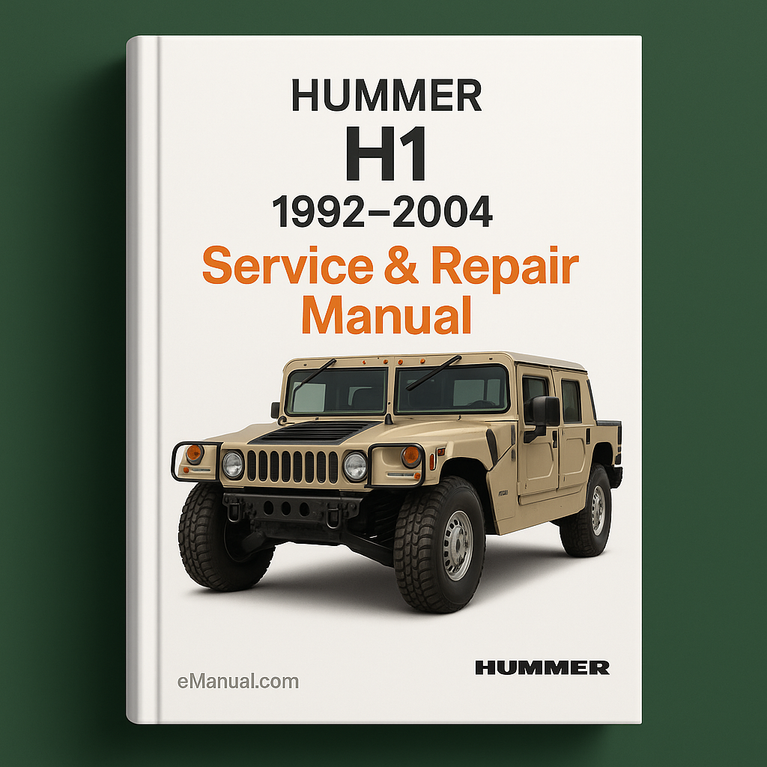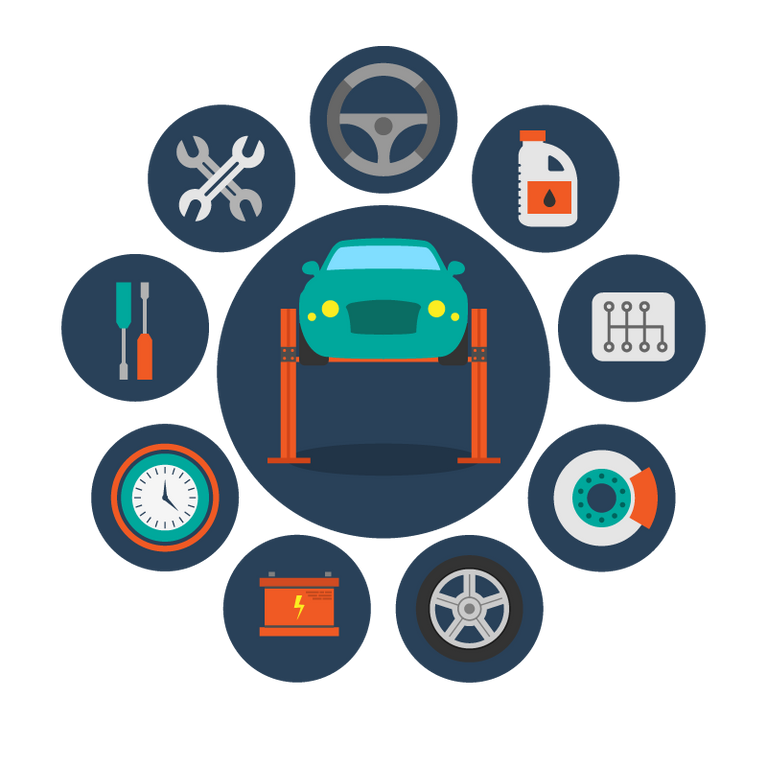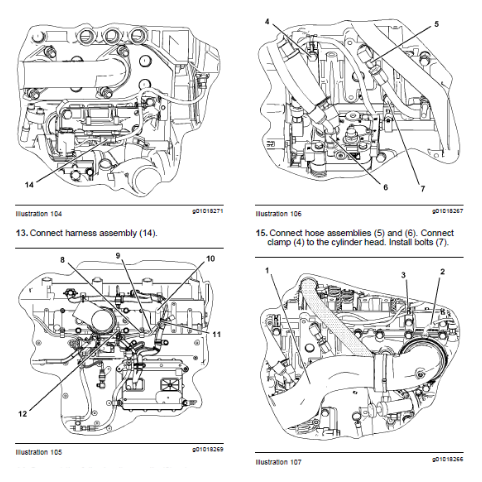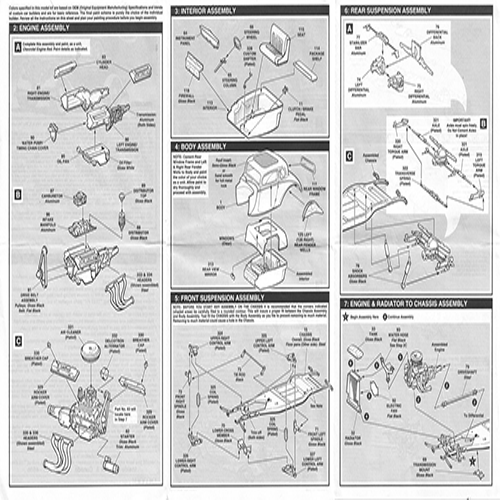Model Years Covered:
1992, 1993, 1994, 1995, 1996, 1997, 1998, 1999, 2000, 2001, 2002, 2003, 2004
Vehicle Identification Number Vin Format:
Provided in manual, typically includes manufacturer, year, and sequential numbers.
Positioning:
The Hummer H1, originally a civilian version of the military High Mobility Multipurpose Wheeled Vehicle (HMMWV), occupied a unique niche as an ultra-rugged, go-anywhere, large-displacement vehicle. This manual serves owners and mechanics who maintain these formidable machines.
Comparative Advantage Of Manual:
Provides dealer-level repair and maintenance information, enabling owners to perform complex tasks and avoid costly dealership labor. Its comprehensiveness is crucial for a vehicle with specialized engineering and components.
Manual Value Proposition:
Empowers do-it-yourselfers and professional mechanics with detailed, step-by-step instructions, hundreds of photos, diagrams, and critical technical data, making it an invaluable resource for maintaining the iconic Hummer H1.
Powertrain:
Engine (maintenance, overhaul, diagnosis), Fuel System (components, testing, specifications), Emission Control System (components, function, diagnosis), Intake & Exhaust Systems, Cooling System, Lube System, Ignition System, Starting System, Charging System, Automatic Transmission (service, overhaul, diagnosis), Manual Transmission (service, overhaul, diagnosis), Transfer Case (service, overhaul, diagnosis), Propeller Shafts.
Chassis And Drivetrain:
Drive Shafts, Differentials (front and rear), Axles, Suspension System (front and rear, components, adjustments), Steering System (components, diagnosis, repair), Power Steering System.
Braking And Wheels:
Brake System (components, diagnosis, repair, bleeding), Brake Control System, Parking Brake System, Tire and Wheel Specifications and Service.
Body And Interior:
Air Conditioning System (diagnosis, repair, refrigerant handling), Supplemental Restraint System (SRS) / Airbags, Seat Belt Systems, Engine Immobilizer System, Cruise Control System, Wiper and Washer System, Door Lock Systems, Meter and Audio/Visual Systems, Horn System, Windshield/Glass/Mirror Replacement, Instrument Panel, Seats, Engine Hood, Doors, Exterior and Interior Trim.
Electrical And Diagnostics:
Electrical System (troubleshooting, wiring diagrams, component testing), Multiplex/CAN Communication Systems.
Maintenance And Routine:
Scheduled maintenance, fluid changes, filter replacements, lubrication, inspections.
Diagnostics And Troubleshooting:
System-specific troubleshooting guides, common issue identification, diagnostic procedures for electrical and mechanical faults.
Repair And Rebuild:
Step-by-step instructions for component disassembly, repair, reassembly, and adjustment for all covered systems.
Technical Specifications And Data:
Detailed technical data, torque specifications, clearances, fluid capacities, electrical specifications, and part identification.
Depth Of Coverage:
Extremely high. Covers everything from basic maintenance and fluid checks to complete engine and transmission overhauls, electrical system diagnosis, and body repair procedures.
Engine Options:
Primarily featured diesel engines, including the 6.2L (379 ci) naturally aspirated diesel (LTA828 V8) and the 6.5L (395 ci) naturally aspirated and turbocharged diesel (L400 V8). Some earlier models may have had gasoline V8s, but diesel was dominant.
Horsepower Torque Range:
Varies by engine. For example, the 6.5L Turbo Diesel typically produced around 190-205 hp and 430-440 lb-ft of torque.
Fuel System Type:
Diesel Injection System. Manual covers pump, injectors, fuel lines, filters, and associated controls.
Block Material:
Typically cast iron.
Cooling Capacity:
Specifications for coolant type and capacity provided in manual.
Oil Capacity And Type:
Manual will specify oil type (e.g., API CI-4 or CH-4 for diesel) and capacity for various engine configurations.
Transmission Type:
Primarily featured automatic transmissions (e.g., GM 4L80-E 4-speed automatic) designed for heavy-duty use. Manual transmissions were less common in civilian H1s.
Optional Transmission Type:
Some variants or military-spec models might have had manual transmissions, but the 4L80-E was the prevalent automatic.
Transmission Features:
Heavy-duty construction, suitable for high torque and off-road conditions. Manual covers internal components, valve body, torque converter, and electronic control systems.
Transmission Fluid Type:
Typically Dexron III or equivalent for the 4L80-E. Specifics detailed in the manual.
Transmission Fluid Capacity:
Specified in manual, typically around 11-13 quarts for the 4L80-E.
Overall Length:
Varies by body style (wagon, pickup, etc.), typically around 185-210 inches.
Overall Width:
Approx. 86.5 inches (without mirrors).
Overall Height:
Approx. 72-77 inches.
Ground Clearance:
Exceptional, often exceeding 16 inches.
Curb Weight:
Ranges significantly by configuration, typically 7,000 - 8,000+ lbs.
Gross Vehicle Weight Rating Gvwr:
Typically around 10,000 - 12,000 lbs.
Wheelbase:
Varies, commonly around 130 inches.
Standard Tire Size:
Commonly 37x12.50R17 or similar off-road focused tires.
Crash Test Ratings:
As a specialized vehicle, formal NHTSA or IIHS crash test ratings comparable to consumer sedans and SUVs are not typically available or applicable. Its design prioritizes off-road capability and protection.
Active Safety Features:
Limited in early models. May include advanced braking systems on later iterations, but primary safety is through its robust construction and mechanical systems. Manual covers brake system checks and maintenance.
Passive Safety Features:
Reinforced chassis, body structure, Supplemental Restraint System (SRS) airbags (driver and passenger on later models), seat belts. Manual details SRS component locations and service procedures.
Infotainment Features:
Basic in early models, typically consisting of an AM/FM radio and cassette player. Later models may have offered CD players or more integrated audio systems. Manual covers removal and installation of audio components.
Driver Assistance Systems:
Limited or non-existent on most H1 models from this era. Focus is on mechanical robustness and driver control.
Connectivity Features:
Minimal to none. No Bluetooth, USB ports, or integrated smartphone connectivity on most models. Manual covers basic electrical system maintenance.
Climate Control Systems:
Manual air conditioning and heating systems. The manual provides comprehensive guidance on A/C system service, recharge, and component repair.
Oil Change Interval:
Typically every 3,000 - 5,000 miles or 6 months for diesel engines, depending on operating conditions. Manual will provide detailed recommendations based on engine type and usage.
Transmission Fluid Change Interval:
Recommended every 30,000 - 60,000 miles or as specified by AM General. Manual will detail procedure and specific interval.
Coolant Flush Interval:
Typically every 30,000 - 50,000 miles or 2-3 years. Manual provides specific coolant type and flush procedure.
Engine Oil Specification:
Diesel engines require specific heavy-duty diesel engine oils, such as API CI-4 or CH-4 rated oils with appropriate viscosity grades (e.g., 15W-40).
Brake Fluid Specification:
Typically DOT 3 or DOT 4 brake fluid. Manual will confirm the exact specification.
Power Steering Fluid Specification:
Specific power steering fluid or Dexron III/Mercon ATF. Manual will provide precise details.
Common Wear Items:
Due to its robust nature, common issues often relate to wear and tear on suspension components, brakes, and the robust but sometimes aging diesel engines (e.g., glow plug issues, injector pump wear). The manual is essential for addressing these.
Electrical System Quirks:
While generally reliable, complex electrical systems can develop faults over time. The detailed wiring diagrams and troubleshooting sections are invaluable.
Comprehensive Schedule:
Manual provides detailed maintenance schedules for various mileage and time intervals, covering all major systems.
Military Service Recognition:
The civilian H1's lineage is directly tied to the highly successful HMMWV, which has served with distinction in numerous military operations worldwide, demonstrating its exceptional off-road and all-terrain capabilities.
Off Road Capability Ratings:
Universally recognized for its extreme off-road prowess, including exceptional approach/departure angles, breakover angles, and water-fording capabilities. This manual is critical for maintaining these extreme capabilities.
Emission Standards Compliance:
Manual provides information on emission control systems relevant to the specific model year and market, ensuring compliance with regulations of the era.



